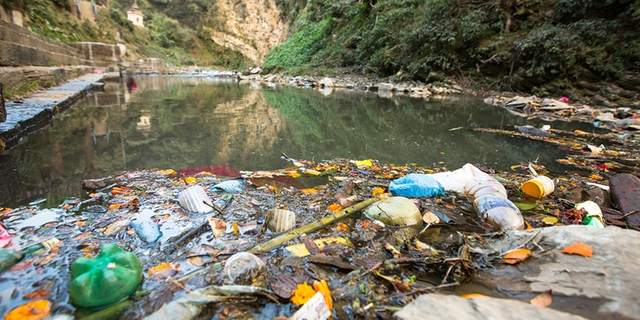Plastic Use and Effect in Environment of India

India celebrates Republic Day on January 26 every year to honour the date on which the country’s Constitution came into effect. But this year, Indians can – apart from commemorating a democratic India - celebrate the fact that corporates are joining the fight against plastic. Several initiatives were kick-started on World Environment Day last year when India played the global host and many companies decided to embrace the “Beat Plastic Pollution” theme.
The global plastic-waste crisis has been accentuated by Chinese and Indian bans on the import of such trash for recycling. India, which long had been one of the world’s largest importers of plastic waste despite generating 26,000 tons of its own plastic garbage per day, banned all such imports only three months ago. It has now embarked on an ambitious plan to phase out single-use plastics by 2022.
But India still has no concrete national strategy to clear the plastic debris polluting its land and waterways. Nor is there a national policy mandating recycling of plastic bottles. Bans on plastic bags in some states have been enforced half-heartedly at best.
As of 2018, about 380 million tons of plastic is produced worldwide each year. From the 1950s up to 2018, an estimated 6.3 billion tons of plastic has been produced worldwide, of which an estimated 9% has been recycled and another 12% has been incinerated.This large amount of plastic waste enters the environment, with studies suggesting that the bodies of 90% of seabirds contain plastic debris. In some areas there have been significant efforts to reduce the prominence of free range plastic pollution, through reducing plastic consumption, litter cleanup, and promoting plastic recycling.
Plastic pollution in tap water
A 2017 study found that 83% of tap water samples taken around the world contained plastic pollutants. This was the first study to focus on global drinking water pollution with plastics, and showed that with a contamination rate of 94%, tap water in the United States was the most polluted, followed by Lebanon and India. European countries such as the United Kingdom, Germany and France had the lowest contamination rate, though still as high as 72%. This means that people may be ingesting between 3,000 and 4,000 microparticles of plastic from tap water per year. The analysis found particles of more than 2.5 microns in size, which is 2500 times bigger than a nanometer. It is currently unclear if this contamination is affecting human health, but if the water is also found to contain nano-particle pollutants, there could be adverse impacts on human well-being, according to scientists associated with the study.
However, plastic tap water pollution remains under-studied, as are the links of how pollution transfers between humans, air, water, and soil.
Effects on animals
Plastic pollution has the potential to poison animals, which can then adversely affect human food supplies. Plastic pollution has been described as being highly detrimental to large marine mammals, described in the book Introduction to Marine Biology as posing the "single greatest threat" to them. Some marine species, such as sea turtles, have been found to contain large proportions of plastics in their stomachs. When this occurs, the animal typically starves, because the plastic blocks the animal's digestive tract.Sometimes Marine mammals are entangled in plastic products such as nets, which can harm or kill them.
Effects on humans
Due to the use of chemical additives during plastic production, plastics have potentially harmful effects that could prove to be carcinogenic or promote endocrine disruption. Some of the additives are used as phthalate plasticizers and brominated flame retardants.Through biomonitoring, chemicals in plastics, such as BPA and phthalates, have been identified in the human population. Humans can be exposed to these chemicals through the nose, mouth, or skin. Although the level of exposure varies depending on age and geography, most humans experience simultaneous exposure to many of these chemicals. Average levels of daily exposure are below the levels deemed to be unsafe, but more research needs to be done on the effects of low dose exposure on humans. A lot is unknown on how severely humans are physically affected by these chemicals. Some of the chemicals used in plastic production can cause dermatitis upon contact with human skin. In many plastics, these toxic chemicals are only used in trace amounts, but significant testing is often required to ensure that the toxic elements are contained within the plastic by inert material or polymer.It can also affect humans because it may create an eyesore that interferes with enjoyment of the natural environment.
.jpg)
PM Modi's Independence Day speech: Call against single-use plastic can be a start
Prime Minister Narendra Modi, delivering his 2019 Independence Day speech at Red Fort,pitched for freedom for India from single-use plastic.“Can we free India from single-use plastic? The time for implementing such an idea has come. May teams be mobilised to work in this direction. Let a significant step be made on October 2,” he said.
This was the Modi government’s second strong position against single-use plastic. Harsh Vardhan, the then Union minister for environment, forest and climate change, said on World Environment Day 2018 (June 5) that the country would try to “phase out” single-use plastic by 2022.
“We should take the first important step to finally bid a goodbye to plastic,” Modi said.
The extent
A total of 46,100 pieces of such products were audited by the Indian arm of Global Alliance for Incinerator Alternatives, a grouping of nonprofits, last year at 250 sites across 18 states. Multilayered packaging accounted for nearly 60 per cent of total branded plastics. While 38 per cent were domestic brands, the rest were global.
Even while banning, many states kept out polythene bags above a certain threshold of thickness. This became a loophole for violators to escape as enforcing such a regulation is tough.
A voluntary study by the Break Free From Plastic Movement claimed multi-layered packaging was a major ocean pollutant.
A concerted effort thus need to include a ban on the use of plastic in processed food. A comprehensive extended producer responsibility is also needed to ensure manufacturers are accountable for recycling, on the lines of rules for electronic waste.

The widespread and unchecked use of plastic in India has raised significant concerns about its detrimental effects on the environment. Plastic pollution has become a pressing issue, leading to severe consequences for ecosystems, wildlife, and public health. To address this crisis, India has been taking steps towards implementing extended producer responsibility measures, which shift the onus of plastic waste management onto the manufacturers and importers. This approach aims to encourage sustainable production, reduce single-use plastics, and promote recycling, thereby contributing to a cleaner and healthier environment for future generations.